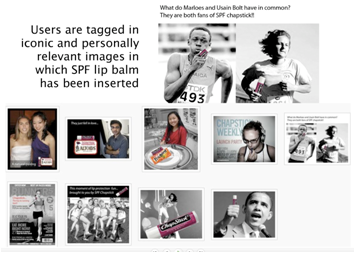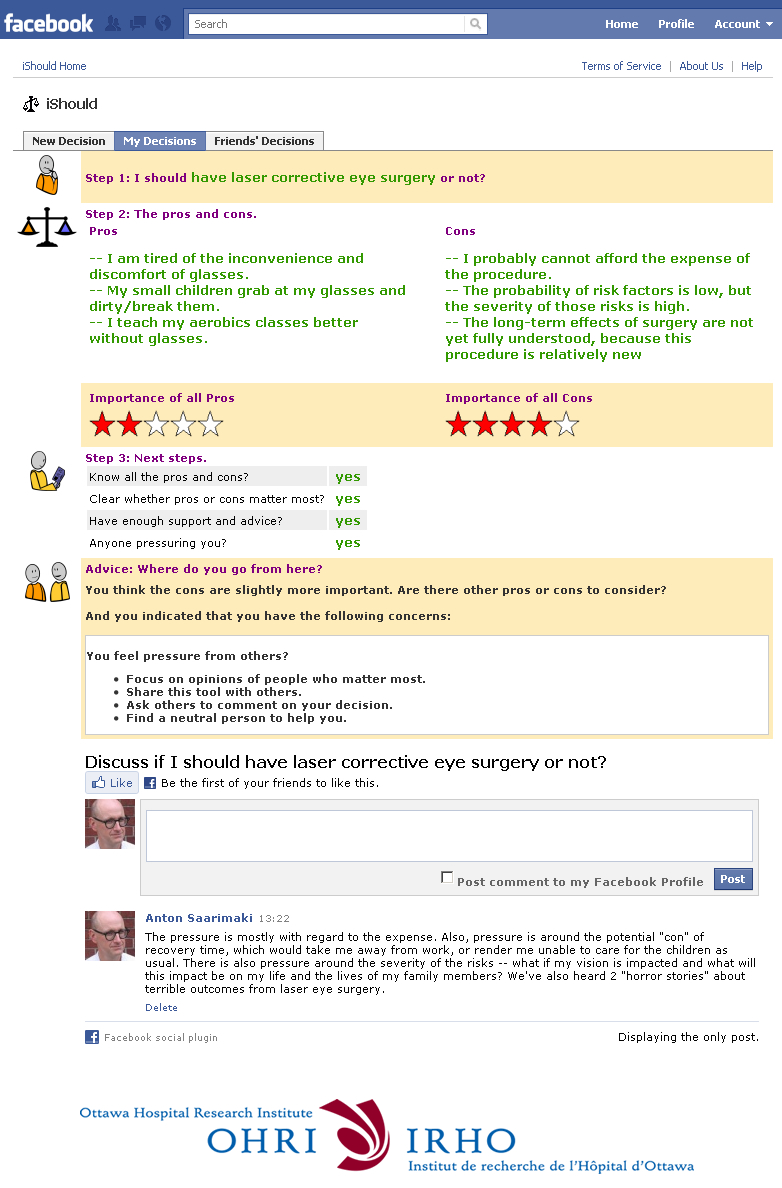Entries in Social Health Community (19)
Ready for the Silver Tsunami?
 September 29, 2010
September 29, 2010  Last week, I attended Mass Technology Leadership Council’s event on the Emerging Technologies for the Silver Tsunami: Aging in Place through the use of Integrated Technology. The room was packed with interested stakeholders from HIT technology companies, hospitals, home health agencies and senior living communities.
Last week, I attended Mass Technology Leadership Council’s event on the Emerging Technologies for the Silver Tsunami: Aging in Place through the use of Integrated Technology. The room was packed with interested stakeholders from HIT technology companies, hospitals, home health agencies and senior living communities.
This is one of several events across the country focused on opportunities that will be brought in with the new waves of seniors.
Beginning in 2011, the oldest of the 78 million baby boomers will turn 65 years old. According to the Stanford Center on Longevity, the "number of older people (age 65 and over) will double over the next 30 years, from 40 million to 80 million, and the percentage of older people in the population will increase from 13% to 20%".
Given the size of this new segment of seniors, their education, affluence and comfort with technology, they will have a powerful impact on healthcare delivery, health plans and aging services.
Riding the Waves:
Leveraging my extensive consulting experience and knowledge about elder care technologies, I have defined five requirements for HIT solutions to meet the needs of seniors, families, caregivers and the care team.
1. Extending Solutions for Care Management
“I want my mom’s doctor to know what is really happening when she is away from his office”.
Through acquisition and partnerships, companies are combining their “point solutions” to bring new capabilities to seniors and their care circle. HIT suppliers are also proactively seeking ways to tie their solutions into the EMR and Health Information Exchange to bring needed insight to the clinician and support the medical home care team.
2. Expanding Solutions across the Care Continuum
“I do not want to have to purchase, learn and manage all different technologies as my father ages.”
There is an opportunity for health information technology firms to design their solutions with a set of capabilities that can be turned on as the senior requires the support. Considering the burden of the adult children and caregivers, the solution for this market will meet the needs of seniors across the care continuum; preventative, acute, chronic and long-term.
3. Guiding Care Decisions
“We are all taking turns caring for my father and we are exhausted since his health is deteriorating each day.”
Most of us have access to calendars and communication technologies which we can use for personal reasons. The problem is that we do not know what to expect each day and find ourselves reacting instead of planning for the care of our loved one. When we have a few minutes, we call our friend who just went through this with her mom. Think about how social networking can be leveraged to help families anticipate, plan and make the best decisions with the guidance of experts and other experienced caregivers.
4. Supporting Service Delivery
“I need to know what our caregivers are observing and be alerted when mom needs additional care.”
Whether they are busy raising their own families or living in another state, adult children struggle to care for their elder loved ones. Professional caregivers including home health workers can use technology to record observations of daily living and engage in shared decision making with the family.
5. Supporting Self -Management
“My dad needs to be able to manage this diabetes on a daily basis”.
With the shortage of health care professionals, older consumers need to take care of their chronic conditions and understand how to make changes when they run into many different situations common to their condition. Technology can serve as an enabler by reminding the senior to take medications and perform certain behaviors, tracking these activities, educating them what to do when these activities are missed, monitoring their vitals and alerting caregivers when problems arise.
Getting Ready for the Silver Tsunami:
As you define/refine your own product strategy for the senior market, think carefully about the steps you will take. The senior market is made up of many different “sub-segments". It is important to identify and understand how these sub-segments differ in their needs, behaviors, technology usage and preferences. This research will provide the insight to guide your product development to meet the requirements of your target audience(s).
How can you prepare for the Silver Tsunami? Learn more.
Seven Mobile Health Engagers
 September 15, 2010
September 15, 2010  We see it every day and everywhere. Consumers are engaged with their mobile phones at restaurants, at the gym, by the pool, in parked cars and in the hallway outside of the doctor’s office. They have a strong need to stay connected and use every free moment to review and respond to messages as well as access online information through their mobile phones.
We see it every day and everywhere. Consumers are engaged with their mobile phones at restaurants, at the gym, by the pool, in parked cars and in the hallway outside of the doctor’s office. They have a strong need to stay connected and use every free moment to review and respond to messages as well as access online information through their mobile phones.
Over the past 6 months, I have heard health care providers, health plans, health care technology companies and employers express strong interest in reaching, engaging and influencing consumers through mobile health applications. Although mobile committees have been formed, most are in the beginning stages of identifying and prioritizing the applications that they will develop and deliver to consumers.
Seven Mobile Health Engagers:
Here are seven key capabilities that companies will want to build into their mobile health applications:
1. Guiding- Sending personalized alerts and reminders for motivating specific actions such as taking medications, testing blood sugar levels or participating in healthy behaviors (e.g. lunch time walk with co-workers).
Consumer perspective: What do I need to do to meet my health needs and goals?
2. Educating- Providing access to a customized set of health information, pushing informational tips based on needs, interests and profile and testing health information knowledge.
Consumer perspective: How can you make learning about my health fun, personalized and easy to understand?
3. Encouraging- Delivering support messages from my social network, clinician and health coach.
Consumer perspective: How can you support me in reaching my health goals at the right time?
4. Consulting- Enabling access to a live discussion with my clinician, health coach or mother’s caregiver.
Consumer perspective: How can you connect me with experts for real time communication and collaboration?
5. Monitoring- Capturing and viewing information about my mood, pain levels, symptoms, activity levels, diet and sleep.
Consumer perspective: How can you help me aggregate and organize all of my health information so that I can see patterns to experience “aha moments”?
6. Deciding- Accessing a decision support tool about my treatment options or viewing my PHR with links to relevant and "in context" content.
Consumer perspective: How can I make better decisions by combining my own information with trusted expert sources and accessing this wherever I am?
7. Managing- Delivering customized messages to help me effectively plan and respond to our health care needs.
Consumer perspective: How can I change from being reactive to becoming proactive about my health and the health of my family?
Generating Your Mobile Health Momentum…
How can you define and design these mobile applications to be most valuable to your target consumers? Unlike many of the mini-applications that consumers can buy in online stores, you have an opportunity to connect these capabilities such as “monitoring” and “deciding” so that consumers can not only track their activity but also make decisions with the patterns of data that emerge.
Think about how you can use “personalization” with your mobile health applications to motivate consumers to stay engaged in their health. How can you help consumers use their mobile phone to communicate and collaborate with their support network and caregivers for better health outcomes?
How far along are you with your mobile health strategies? Have you selected your priority consumer segments? Have you conducted research to deeply understand their needs, mobile behaviors and attitudes? Have you conceptualized, defined and validated a solution for each segment? Are you ready to pilot the solution with the target segment? Have you defined your measurements for success?
With experience and industry knowledge in the mobile health space, how I can help you move your mobile initiatives forward?
Read more about my mobile health technology expertise.
SPF Stalker & Healthy Check-ins; Social Media Interventions Designed By & For Students
 August 4, 2010
August 4, 2010

During my Healthcare Unbound Panel on “New Models in Social Media”, Kendra Markle from the Stanford Persuasive Technology Lab shared interesting examples of students designing their own social media interventions.
While co-creating with a consumer segment, you can design applications they value which leverage their relationships with their own social network and influence both personal and group behaviors.
Our Interview:
Sherri (Stepping Stone Partners): Tell me about how students define their own interventions. For example with SPF Stalker, what is the goal and how did students participate in this innovation process?
Kendra (Standford Persuasive Technology Lab):This project was created by some ingenious students as part of a class on habit formation taught by BJ Fogg, Director of the Stanford Persuasive Technology Lab. The project goal was to use technology to motivate people to wear sunscreen every day.
Students came up with this great idea to photoshop pictures of SFP chapstick into photos of famous people and photos they took of each other as a humorous way to remind each other about wearing SPF chapstick. By tagging their friends in the photos posted to Facebook, each friend gets an irresistible email from Facebook saying "you've been tagged! Click this link to see the photo". The response rates for click throughs on Facebook tagging emails is unbelievably high.
Sherri: What are the comments that students have shared about SPF Stalker? Why do they want to use it with their friends?
Kendra: This intervention was designed to be funny, which made the photos memorable enough to share with friends, thereby recruiting even more people into the intervention without them realizing it. We call this a stealth tactic - when people start engaging in healthier behavior without being explicitly told they're participating in a "health" app.
Sherri: What is the goal for the Healthy Check-ins project that you presented?
Kendra: The healthy check- ins project is also a stealth project, that's just our internal name for it. Our goal for the healthy check ins project is to combine the element of checking in with target health behaviors such as taking the stairs instead of the elevator, eating less meat or biking to work instead of driving. By checking in, many people feel some validation of their behavior, or feel they get credit for doing it by reporting it. We combined this urge with the fun of unrealistically awesome achievements from the game world to produce an experience that rewards you with virtual goods and powers that help you in the game world for indulging in the urge to check in your real behaviors. The motivation you feel to level up in the game layer can be translated into motivation to complete healthy behaviors just so that you can check them in.
Sherri: How do students feel the Healthy Check-ins will help them and their friends become more healthy (e.g. what is the value that students see?)
Kendra: So far, the students are excited about this project because it's something that they think they would use and could picture themselves getting a little addicted to. Since college aged kids want to do everything with their friends, we're working on making this intervention a social experience, one that requires use of both reciprocity and vengeance to advance. These are two behaviors that are believed to have evolved to encourage us to cooperate with each other. Cooperation is a very strong intrinsic motivator, as is competition, especially when both are used together.
Sherri: Since “location based services” (Foursquare like) are so popular, how have the students envisioned the connection between this capability and healthy locations for check-ins?
Kendra: We've expanded beyond location check ins to behavior check ins. Why is everyone feeling limited to location check ins? GPS technology provide convenient proof of presence at a location that can translate into monetary value but there are many other things that can be easily proved when using a mobile phone. It just takes some creativity. Students have come up with a whole bunch of target behaviors and creative ways to prove they're engaging in them, all while in stealth mode so the user never feels like they're supposed to be "getting healthy" while using the app.
Social Media Meets Shared Decision Making with iShould
 July 27, 2010
July 27, 2010  While taking a walking this beautiful afternoon, I noticed a frail elderly woman inching forward on the sidewalk in front of me as her aide held her arm securely around the senior’s tiny waist.
While taking a walking this beautiful afternoon, I noticed a frail elderly woman inching forward on the sidewalk in front of me as her aide held her arm securely around the senior’s tiny waist.
Although you and I may not need physical support to move ahead, imagine the feeling that you are heading in the right direction, with guidance each step of the way.
During my panel last week on “New Models for Social Media”, I shared an example of an interesting approach which is at the intersection of social media and decision support. With the “iShould” application developed by the Ottawa Hospital Research Institute (OHRI), you can reach out online to your own social network to gather input for your health decision. If for example you are considering corrective eye surgery, you can bring those you trust into your decision process. On this Facebook application, you fill in the decision, list and rate the pros and cons and select friends to comment. This invites support around your decision.
I do believe that this application can be most valuable when you are asking friends who have experience with your health decision so that they can provide insightful comments for your consideration.
Follow the “Value” Brick Road for Engagement
 July 23, 2010
July 23, 2010 
Since returning from the Healthcare Unbound Conference in San Diego earlier this week, I have been asked what has changed in the past year.
In his opening remarks, my colleague Vince Kuraitis, Principal of Better Health Technologies talked about the progress we’ve made with the technologies and experimenting with different business models, but the focus now is on the “value network”.
Steps Along the “Value” Brick Road
During the conference, one clear theme was that value is determined by the recipient and can be used to attract and engage consumers.
How can your organization create and lead with value? Here are the key steps which begin by identifying…
Step 1) Who?
Consider how much your organization deeply understands the needs and behaviors of your target audience (Notice that I did not say understands the consumer’s feedback on your offering). This perspective is essential before you can define, develop and deliver value which is compelling to your target consumers.
Many companies use segmentation to focus in different groups of consumers and understand what each group values.
Several speakers mentioned segmenting the senior market. After all, the active 68 year old male is not the same as the 78 year old male trying to manage his health and the health of his 98 year old mother who happens to live three states away.
Within the corporate wellness market, we heard that employees have different motivations. Some employees are eager to participate in a company- wide competition tracking their activity weekdays and weekends, while others are interested in socializing at lunch time with their Walking Group. Employers have an opportunity to offer a set of programs with online tools to meet the needs of these different employee segments.
Step 2) What?
After understanding the different segments of your target audience, it is important to think about ways you can bring value to each of them.
Liz Boehm, Principal Analyst at Forrester Research, discussed the “Four Pillars of Aging in Place” which included health, safety, connectivity (e.g. friends. family and community) and contribution (e.g. meaning/purpose).
Most companies in the senior market focus on health and safety, which happens to be the “stuff that people wish they did not have to think about”. Through research, Forrester has learned that the other two areas, to be connected and to contribute, are actually the “stuff that people want”. These are two areas can be used to engage seniors in a way that is meaningful to them. Is this the consumer’s desire for “meaningful use”?
Step 3) How?
Gordon Norman, Chief Innovation Officer at Alere challenged us with “Now that the we’ve unbound healthcare, who will put it back together?”
Think about the value network and the role that your company can play.
You may choose to partner to meet all of the needs of your target audience. With technology standards in place, you can design your product to connect in with a larger solution.
Or you can lead the way and take on the “aggregator” role, building a hub to service the consumer/member/employee/patient. By becoming the aggregator, your company has an opportunity to deliver more value through data and analytics. Consider the holistic view that you can share, enabling your users to make better decisions.
I will leave you with two questions to consider. Where is your company on the “value” brick road? How far are you willing to go?


